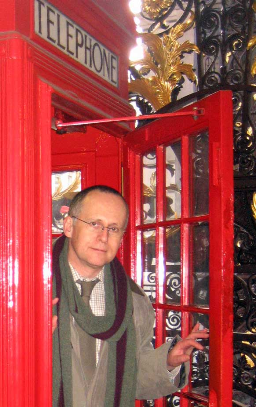
Ted Nield wonders where all this magazine’s geotechnical features are.
Geoscientist 18.11
A year or two ago, a major UK civil engineering company employed a specialist press officer to promote its geotechnical work. This former local newspaper journalist sent a questionnaire around to all relevant staff, asking them in which media organs they would most like to see their achievements featured. The winner of this popularity contest, the one magazine where this company’s geotechnical specialists dreamt most of appearing, knocking New Civil Engineer into a distant second, was – Geoscientist.
Armed with this information, the keen young press officer was soon on his way to London to buy your Editor lunch (a tactic that has never been known to fail). Meanwhile, I sent him back issues. I explained that the Engineering Group was by far our largest. I talked of Chartership and Accreditation and professional formation. I told him that I was interested in all aspects of geotechnical engineering, and was favourably disposed to publishing it. I told him how I wished that our industrial heritage could be viewed once again with awe and romance. I told him how I annoyed my wife incessantly by driving miles out of our way just to see a good bridge.
So we spoke over lunch about possible feature ideas. He responded with six, based on his company’s portfolio of recent contracts. I think I approved four – maybe even five.
And that was the last I heard of it. Before his contract was even up for renewal, my contact had found another job – I suspect, defeated and demoralised.
Other companies’ bright young PR things have made similar overtures. I have discussed, and in principle approved, potential features on underpinning work at major national monuments; and on tunnels being driven in unstable volcanic provinces. “I will talk to the consulting engineer and get back to you” they say. And that’s always the end of it.
You don’t often find much sympathy among journalists and editors for organisations’ press officers; but I have jumped that fence once or twice and I know what soul-destroying work company PR can be. You have an initial idea, make a creative connection, and then try to follow through; at which point you are beholden to somebody else to write something. And that is where it fails – even if said scientist has already said that they would like nothing more than to appear in the pages of the organ in question.
What this shows is that what companies really need are not just press officers but writers in residence – or a network of available freelances – so that someone other than the busy scientist or the PR officer write the pieces on offer. But in the meantime the system, even when best resourced, relies upon enthusiasm for writing among scientists and engineers themselves. With all the competing pressures bearing down on them, that alone is not likely to be enough.
But if there is anyone out there prepared to pitch an idea for a geotechnical feature in Geoscientist, I beg them to do so. Wishing for coverage in the Fellowship magazine is a wonderful first step. How about actually writing something? You will be pushing at an open door.
You can find instructions on how to write a magazine feature in Geoscientist Online, by clicking “Instructions for Authors”. E:
[email protected]